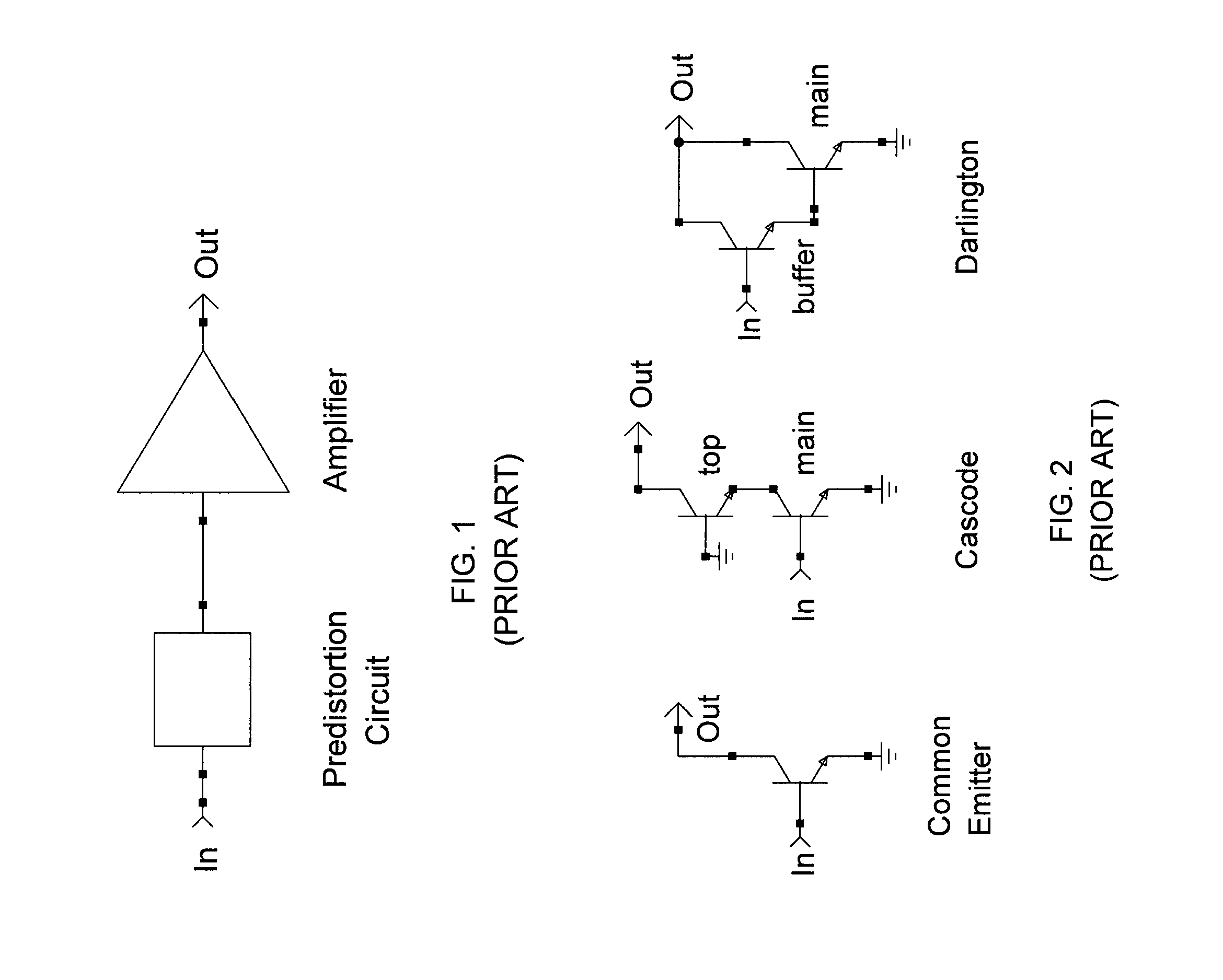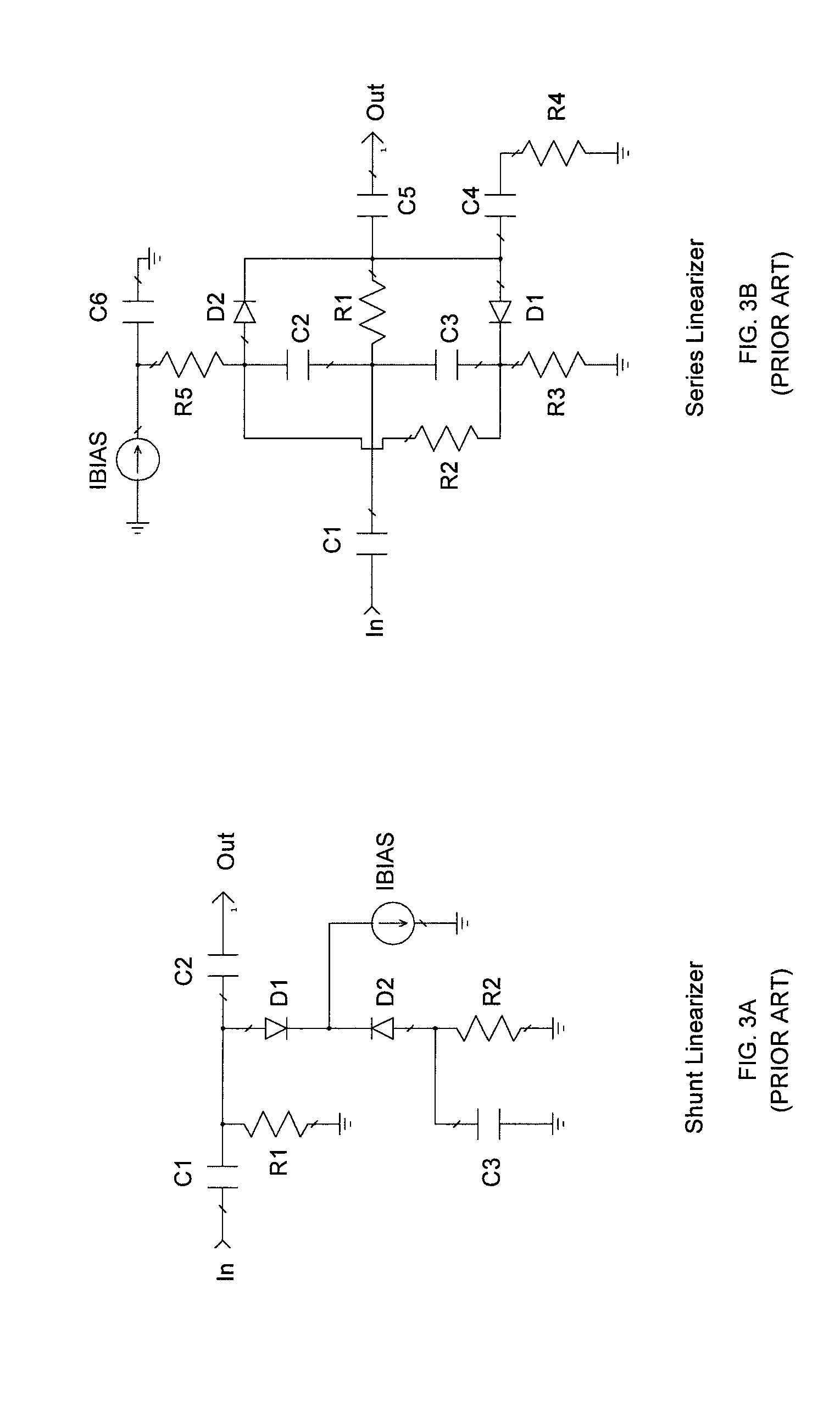Apparatus and method for broadband amplifier linearization
a broadband amplifier and linearization technology, applied in the field of electrical circuits, can solve the problems of reducing the effective amount of content or information that can be transmitted, reducing the ber (bit error rate), and reducing so as to improve the 3rd order distortion of the amplifier, improve the linearization effect of broadband, and reduce the amount of dc power required
- Summary
- Abstract
- Description
- Claims
- Application Information
AI Technical Summary
Benefits of technology
Problems solved by technology
Method used
Image
Examples
Embodiment Construction
[0053]The following description is provided to enable any person skilled in the art to make and use the invention and sets forth the best modes contemplated by the inventor for carrying out the invention. Various modifications, however, will remain readily apparent to those skilled in the art. Any and all such modifications, equivalents and alternatives are intended to fall within the spirit and scope of the present invention.
[0054]The present invention discloses how improved distortion can be achieved without adding extra power to the amplifier and without requiring that newer transistor technologies be used. The invention may be advantageously applied to a new CATV amplifier integrated circuit which achieves critical system distortion requirements while reducing power consumption by more than 40% compared with the current state of the art alternatives.
[0055]More particularly, the present invention makes use of pre-distortion techniques to improve the 3rd order distortion of a CATV...
PUM
 Login to View More
Login to View More Abstract
Description
Claims
Application Information
 Login to View More
Login to View More - R&D
- Intellectual Property
- Life Sciences
- Materials
- Tech Scout
- Unparalleled Data Quality
- Higher Quality Content
- 60% Fewer Hallucinations
Browse by: Latest US Patents, China's latest patents, Technical Efficacy Thesaurus, Application Domain, Technology Topic, Popular Technical Reports.
© 2025 PatSnap. All rights reserved.Legal|Privacy policy|Modern Slavery Act Transparency Statement|Sitemap|About US| Contact US: help@patsnap.com



